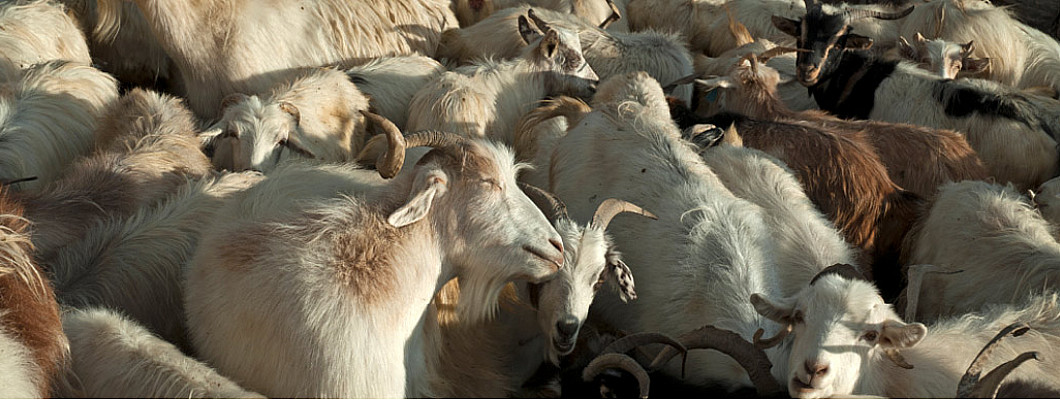
Ladakh is a unique place in India, offering a deep spiritual connection. When you see the mountains, you realize their immense scale and the challenges of crossing them. Despite the difficult terrain and extreme weather, humans have lived here for generations. Their survival is made possible by their local knowledge and skills. The crafts of Ladakh showcase a distinctive character that is exclusive to this region. These crafts were born and evolved in harmony with the unique environment of Ladakh, making them truly special.
1. THANGKA:
Thangkas are religious painted scrolls that depict Buddhist deities, traditionally created on cloth. Over time, techniques such as embroidery and applique have been incorporated. These artworks are considered visual representations of the spiritual world. Thangka art is a traditional form of Buddhist expression influenced by Tibetan, Indian, Chinese, and Nepalese cultures, leading to various styles and schools. Factors such as geography, availability of materials, socio-cultural influences, and the specific schools of Buddhism practiced contribute to these differences. Originally, Thangkas served to heal and protect those who contemplated them, regardless of the mood of the scenes depicted. They are commonly used in monastery prayer halls and homes. Large Thangkas are displayed only during festivals, while throughout the rest of the year, they are carefully rolled up and stored away.
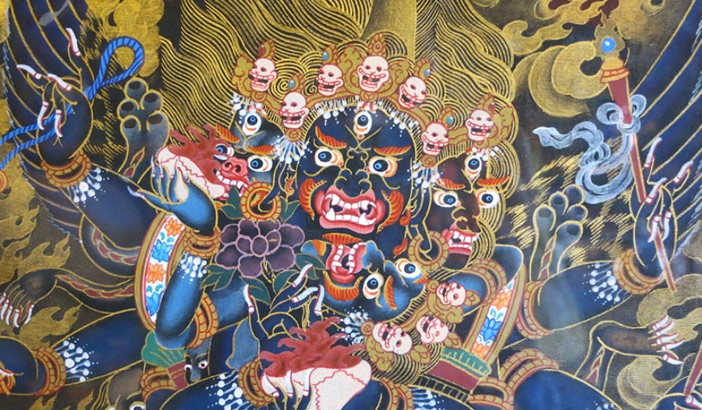
2. PASHMINA Weaving:
The classic Ladakhi shawl stands as one of the most exquisite textiles ever woven, showcasing exceptional skill and artistry applied to one of the world’s most delicate fibers. When Pashmina shawls first began to be crafted in the regions of Jammu and Kashmir and Ladakh, they were primarily intended for royalty. It has been an object of desire for Mughal emperors and Sikh maharajas, Iranian nobles, French emperors, Russian and British aristocrats and eventually for the increasingly prosperous bourgeoisie created on both sides of Atlantic by the industrial revolution.. These shawls have also been traded globally, with India serving as the leading exporter of pashmina for a significant period. Since the 19th century, pashmina has been in high demand worldwide under the name 'cashmere,' and despite their high prices, these luxury shawls have consistently maintained strong sales.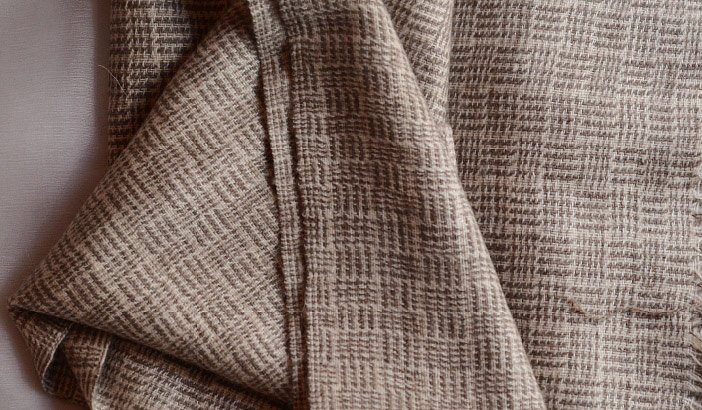
3. PERAK:
The Perak is a distinctive traditional headgear from Ladakh, characterized by its unique craftsmanship and cultural significance. Typically crafted from materials such as wool, felt, or silk, the Perak features intricate designs and vibrant colors that reflect the rich artistic heritage of the region. This headgear often incorporates decorative elements like beads, embroidery, and fur, enhancing its visual appeal and cultural symbolism.
Worn primarily during important events such as festivals, weddings, and religious ceremonies, the Perak serves not only as a fashion accessory but also as a symbol of social status and community identity. Each ethnic group within Ladakh may have its own variations of the Perak, showcasing different styles, colors, and embellishments that convey specific meanings and traditions. The making of a Perak involves skilled artisans who utilize techniques passed down through generations, making it a testament to the region's craftsmanship and cultural continuity. Overall, the Perak is more than just a piece of clothing; it embodies the spirit and heritage of the Ladakhi people, celebrating their unique identity and traditions.
4. PABU- Ladakhi shoes:
Pabu is a traditional type of footwear from Ladakh, crafted primarily from leather, wool, or felt to provide warmth and comfort in the region's cold climate. Characterized by its distinctive rounded toe and slightly elevated heel, Pabu often features colorful embroidery and decorative stitching that showcase local artistry. These shoes are designed for both everyday wear and special occasions, making them practical for navigating the rocky terrain of Ladakh while complementing traditional attire. Beyond functionality, Pabu symbolizes the rich cultural heritage of the region and reflects the craftsmanship of local artisans, with different styles often indicating the wearer's ethnic background or social status within the community.
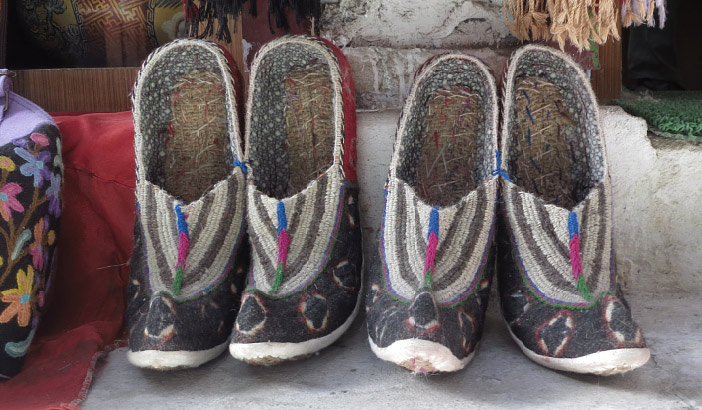
5. DAMAN- Musical Instrument:
The Daman is a traditional stringed musical instrument from Ladakh, integral to the region's cultural heritage and folk music. Typically crafted from wood with a long neck and strings made from gut or synthetic materials, the Daman features a simple yet elegant design that enhances its melodic sound. Played by plucking the strings with fingers or a plectrum, it often accompanies other instruments and vocals during celebrations and cultural performances. The Daman holds significant cultural importance, symbolizing Ladakhi identity and community, as it is frequently featured in songs that celebrate local traditions, festivals, and rituals, making it a cherished element of the region's musical landscape.
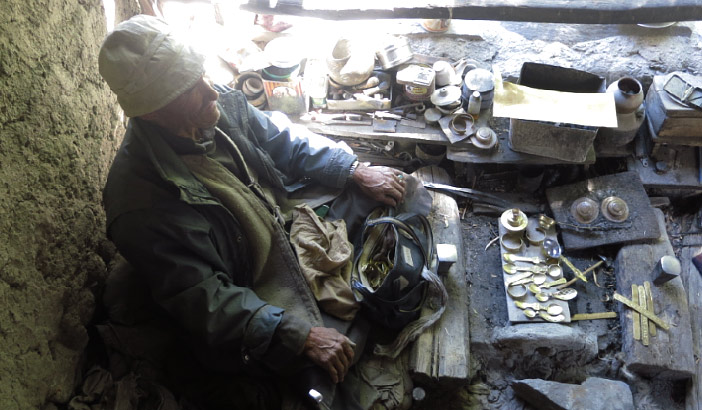
6. METAL WORK:
Ladakh is celebrated for its exquisite metalwork, showcasing the region's rich cultural heritage and exceptional craftsmanship. Artisans skillfully craft a range of copper and brass items, including intricately designed teapots, traditional bowls, and ornate jewelry. Among the most iconic creations are Tibetan-style prayer wheels, or "mani wheels," beautifully engraved with prayers and mantras, serving both spiritual and aesthetic purposes. The artistry involves traditional techniques such as hammering, engraving, and casting, with many methods passed down through generations. Ladakhi metalwork is not only functional but also deeply symbolic, often featuring motifs inspired by Buddhist philosophy and local folklore. This craftsmanship remains integral to daily life and religious practices, reflecting the cultural essence of the region. These vibrant metal creations are prominently displayed in local markets and are highly cherished by both residents and visitors, embodying the enduring legacy of Ladakhi artistry and its profound connection to historical traditions.
7. KHADBAN- Pile Carpet:
Khabdan pile carpets are exquisite textile creations known for their intricate craftsmanship and rich cultural heritage. Characterized by a dense weave of 48 knots per square inch, these carpets offer both durability and a luxurious texture. The meticulous knotting technique not only enhances the carpet's aesthetic appeal but also contributes to its longevity, making it a prized possession in homes and collections. Often adorned with vibrant colors and traditional patterns, Khabdan carpets reflect the artistry and skill of their weavers, serving as a testament to the rich history of carpet-making in the region. Whether used as decorative pieces or functional floor coverings, Khabdan pile carpets embody elegance and sophistication.
8. ROCK ART - Buddhist:
Buddhist rock carvings in Ladakh showcase a strong influence from the Kashmiri sculpture tradition, predating Tibetan art in the region. These carvings blend provincial Gupta art with the Gandharan style and feature deities of Indian origin, likely dating from the eighth to eleventh centuries. This period marks significant Indian Buddhist influence in Ladakh before Tibetan Buddhism emerged.
The craftsmanship is remarkable, with harmonious proportions in the figures’ limbs, garments, and ornaments. The intricate details contrast sharply with the shallow carvings of the later period found on mani (prayer) walls. As Alchi sculptures are recognized as Kashmiri in origin, it can be inferred that these rock-carved figures served as models for later artists, leading to the creation of replicas in early Ladakhi temples.
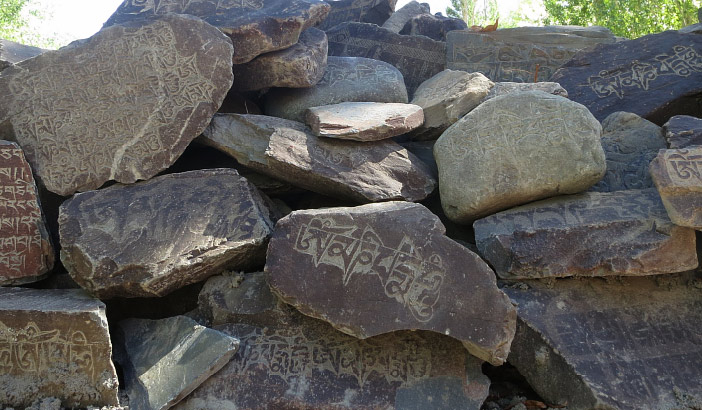
9. MASK:
The Hemis Festival in Ladakh is celebrated for its vibrant masked dances performed by monks. These masks are not only visually striking but also hold deep cultural and religious significance. Crafted with a foundation of lightweight and flexible paper-mâché, the process begins with clay molds shaping the basic structure before layers of paper-mâché are applied. Additional natural materials, such as fabric and dough, are incorporated for intricate details. The masks represent various Buddhist mythological figures, including wrathful deities, protective spirits, and historical icons like Guru Padmasambhava, the founder of Tibetan Buddhism in Ladakh.
10. BASKETRY:
Basketry is a significant traditional craft in Ladakh, passed down through generations to create both functional and aesthetically pleasing products for everyday use. Among the most iconic Ladakhi baskets is the Tsepo, a large, backpack-style basket traditionally used to carry various items such as firewood, vegetables, dung, and even infants. These baskets are primarily crafted from chipkiang grass, a durable and abundant natural plant found throughout the region. Known for its strength and resilience, chipkiang grass is ideal for basket weaving. Ladakhi artisans skillfully create Tseptos and other baskets using diverse weaving techniques, preserving this rich cultural heritage.










Leave a Comment